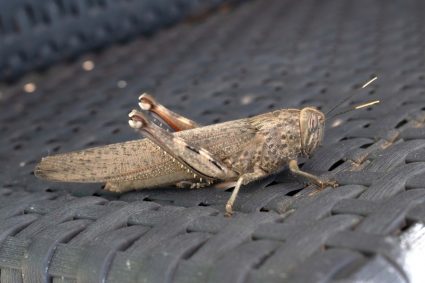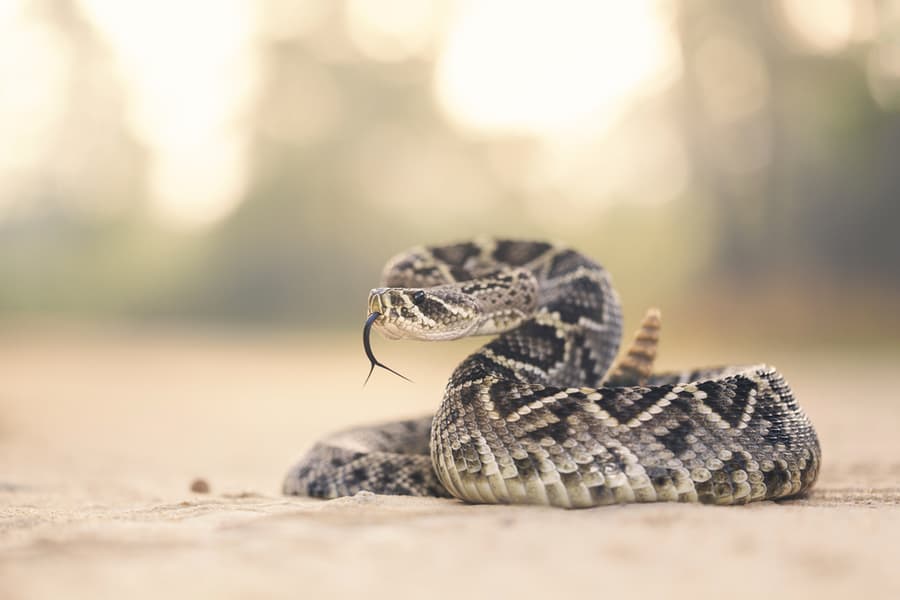
For most people, seeing snakes is a naturally terrifying experience.
Even though rattlesnakes do not specifically target humans, they can still be an uncomfortable sight. The best thing is to keep these animals as far away from you as possible.
One of the popular ways to do this is by using their sense of smell against them.
In this guide, we will discuss some natural scents that repel snakes and other foolproof strategies to keep them at bay.
Snakes are the last thing anyone needs around them—unless they enjoy playing with the non-venomous species. But if they hate the sight of slithering animals, below are some things they can use against these animals:
- Tobacco
- Pink agapanthus
- Marigold plants
- Snakeroot plant (otherwise known as the devil’s pepper)
- Lemongrass
Here are the proven rattlesnake-repelling plants. Carefully read the guide to learn more!
In this article, we will consider some common smells rattlesnakes hate. After that, we will discuss how to identify these slimy creatures and other alternative methods apart from scents that you can employ to keep them at bay. Finally, we’ll answer some frequently asked questions about the infestation of this snake specie.
8 Common Smells Rattlesnakes Hate

Rattlesnakes have a heightened sense of smell for survival, whether to eat or avoid danger.
These animals typically have a stronger-than-normal sense of smell to compensate for their lack of body parts.
This aids them in locating and hunting prey. Rattlesnakes typically flick their tongue to smell the air and know what direction to go.
Once they smell anything unpleasant, they make a sharp detour in another direction.
To help you avoid running into rattlesnakes, we compiled some common things they hate. Understanding how to use them against these dangerous pests can help protect you and your family all year.
Below are some smells that rattlesnakes can’t stand:
1. Lemongrass

Lemongrass is one of the many multipurpose plants in the plant community. It is a medicinal herb in many cultures. However, it also doubles as a pest repellant.
It is an effective deterrent against small, swarming mosquitoes and can drive away more giant animals like snakes. The best part is that this green-colored plant is easy to grow.
You can grow a small lemongrass bush around your property. Their natural citrus fragrance is disgusting to most snakes. It can help you deter rattlesnakes from your environment.
In colder climates, it is advisable to grow lemongrass in pots. That way, you can bring your lemongrass plants inside the house during winter to preserve them.
During summer, you can bring the pots out and place them on your porch to deter rattlesnakes and other snake pests.
But if you live in warmer climes, you can grow this plant outside throughout the year.
However, on a note of caution, lemongrass bushes can grow wild. So, remember to trim them often, to manage their size.
2. Garlic

Garlic contains sulfuric acid, like onions and other vegetables in the Allium family. Thankfully, this sulfur is one of those smells that snakes strongly detest because of how offensive the smell is.
Sulfur is the active substance in onion that makes people cry while cooking. So, imagine its effects on smaller animals like rattlesnakes.
You can make a DIY garlic spray to use this potent odor against rattlesnakes. You will need a bunch of garlic cloves, some water, an empty jar, and some garlic oil.
The oil helps to increase the potency of this garlic spray. Once these ingredients are ready, pull out your blender and pour in a few tablespoons of water.
Then, add the peeled garlic cloves to the water and blend until they form a paste. Add some garlic oil and blend again.
Once done, pour the mixture into the empty jar and keep it tightly shut for a few hours before application. Afterward, diffuse the spray on possible snake entry points, like around your house, windows, doorways, and chicken coops.
For this rattlesnake-deterring strategy to be effective, you must apply the mixture in large quantities. Also, garlic mix requires frequent reapplication, at least biweekly.
Reapplication is also necessary immediately after it rains.
3. Mother-in-Law’s Tongue (Snake Plant)

This plant got its funny-sounding name from its tall, sharp leaves that people liken to a mother-in-law’s caustic tongue. It is also called the snake plant because its pointed leaves, which are like swords, terrify snakes.
Although the snake plant requires low maintenance, it is better suited for warmer climates like 21 degrees Celsius and above. However, this does not mean it cannot grow in cold climates.
The difference is that the outside weather in hotter areas makes it suitable for this plant to grow all year round. You only have to position them away from direct sunlight as it can scorch their leaves.
Planting them on wet ground can also cause their roots to rot. But apart from these, there is not much required to keep this plant alive.
If you live in a colder region, you are better off growing this plant in pots instead of in a garden. Leave the pots outside during summer and bring them in during winter.
4. Wormwood

Also called Chrysanthemum weed, this plant grows as tall as weeds. Remember that snakes do not like the sight of tall, intimidating objects.
So, the presence of this plant around your building, combined with its pungent smell, can repel even the scariest rattlesnakes.
Wormwood contains absinthin, a chemical that gives it a bitter taste. If rattlesnakes ingest any plant containing absinthin, the chemical will cause severe irritations in their mouth and throat.
That is why most snakes like to steer clear of this plant. Another advantage is that the plant can grow in almost every climate. So, where you stay does not matter here.
Even if wormwood loses some leaves during winter, you can be sure they will grow back the following year.
However, the only major drawback of this plant is its invasive nature. Like lemongrass, this plant can grow fast and wild, so prune it often to keep the plant in check.
Also, position them far from your other plants to prevent them from creeping into the space of these plants. But if you have enough free land and few plants in your yard, you can let the wormwood plant grow out.
5. Snakeroot Plant
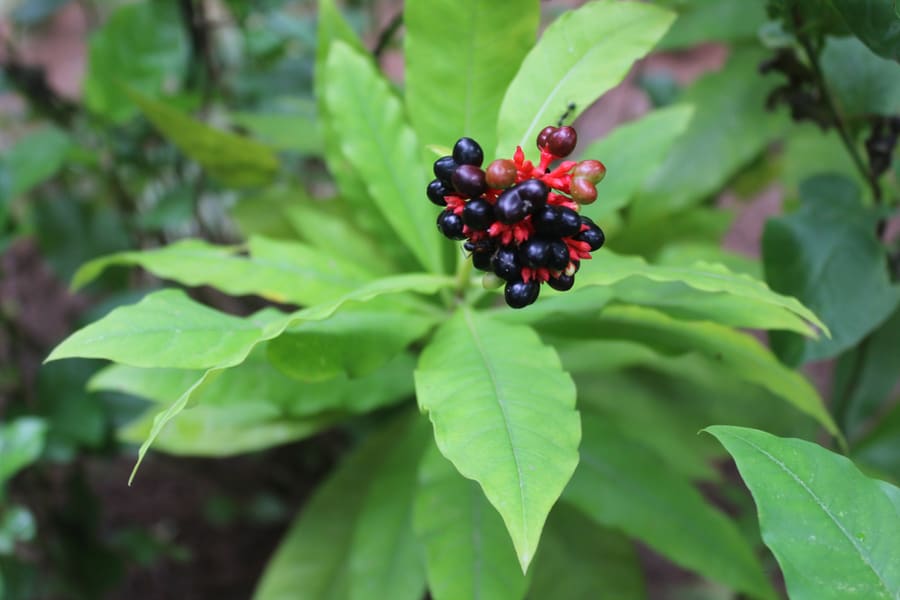
Otherwise known as the devil’s pepper, this plant contains a chemical called reserpine. This chemical gives it a distinct bitter taste that keeps snakes far away from the plant and its surroundings.
Snakeroot plants have a life-threatening effect on snakes, including slower heartbeat rates, dizziness, and confusion. Besides being an effective snake repellant, people often use this plant as a traditional snake bite remedy.
Plant it around strategic points in your yard, especially where you have noticed rattlesnake activities. The plant would make a powerful weapon in your rattlesnake-repelling arsenal.
6. Tobacco
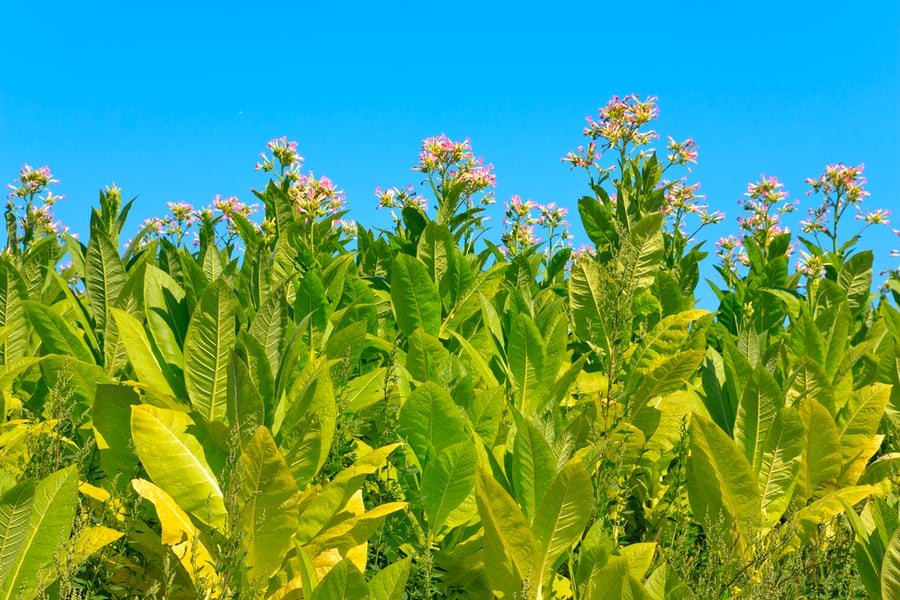
We have already established that rattlesnakes do not like strong smells, and nicotine is one of these smells. The tobacco plant has a strong odor and is used in many rural cultures as a snake repellant.
However, this plant is better combined with other snake-repellant plants, as it is not strong enough. Also, since the tobacco plant contains an intoxicant, it is better planted far away from children and pets.
7. Pink Agapanthus
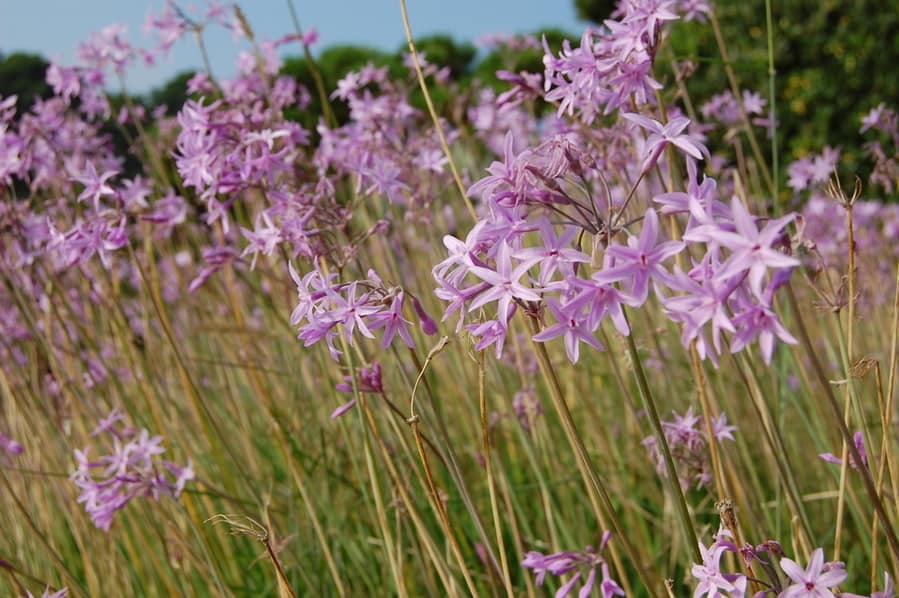
This plant, with trumpet-shaped flowers, belongs to the onion family and blooms during spring and early summer. The bright pink flowers of the pink agapanthus can light up any living area, indoors or outdoors.
The trumpet-shaped flowers of this plant also release a sweet-smelling fragrance as they bloom. However, this sweet scent is rather irritating for most pests, including snakes. Thus, it is an effective rattlesnake repellant when planted around any building or yard.
But the pink agapanthus plant is more than just a pretty flower or a snake repellant. In many places, it is known for its medicinal benefits.
For example, it helps to manage sinus infections. So, growing this flower in your garden is multifunctional in your household.
Plus, it is fast-growing, so you don’t have to wait a long time to use them as a snake repellant. However, try not to grow them in a wet area because this will make their roots rot.
8. Marigold Plants

Although the blooming flowers on marigold plants are brightly-colored and attractive, these plants can be dangerous to pests. Their flowers have a unique combination of red, orange, and yellow, which produce a powerful scent.
Marigolds have firm roots that go deep into the ground and release a strong offensive odor. Like the sweet-smelling fragrance of pink agapanthus, the smell of the marigold plant is potent enough to repel pests like snakes and moles. Even if the snake burrows into the ground to hide, the odor can permeate the soil.
Marigolds, whether of the French or American variant, are easy to plant and perform better in warmer climes. You can grow these plants’ seedlings, and as they grow, prune the faded flowers for a new bloom.
That way, you can have an endless supply of anti-snake plants.
How To Identify Rattlesnakes

To the untrained eye, all snakes look alike—slimy, creepy, or cute, depending on how you see them. However, the ability to identify different snake species can be a lifesaver.
Some snakes, like a corn snake, are mainly harmless. Others, like rattlesnakes, are venomous and dangerous and must be avoided.
But how can you avoid dangerous snakes without knowing what they look like? The best way to identify a rattlesnake is to look at its tail.
Rattlesnakes have unmistakable rings around their tails. They are also characterized by their triangular head, which most venomous snakes have.
So, when you spot a triangular-headed snake, you know it is venomous. Then, you can look for other identifying marks to determine if it is a rattlesnake or something else.
One of these identifying marks is their wide body that lies flat on the ground.
If you spot any snake with these characteristics in your yard, it may be best to apply one or more of our recommended repellants.
Alternative Ways To Snake-Proof Your Environment

By now, we believe you understand how to deter rattlesnakes using some scents that they hate. However, this strategy is not entirely foolproof because if the main attractant is still there, snakes will keep coming around.
For example, rats and rabbits form a snake’s essential diet. And where do these animals hide? In tall grasses, overgrown gardens, bushes, and shrubs.
If there is a portion of your house where rats and rabbits have made a haven, snakes are likely to go there. So, as you employ the rattlesnake-repelling strategies, it would help if you identify the root cause of the infestation and handle it accordingly.
But on a general note, we recommend cutting down tall weeds and grasses to eliminate rattlesnakes’ hiding spots. Also, you can practice frequent lawn mowing at least once a week.
If you have a garden, ensure you weed it regularly too.
Do you have woodpiles stacked in your compound in preparation for winter? If there are, check the gaps between the wood heaps. These gaps are another favorite hiding spot of different snakes.
If you have a shed, move your wood there and keep the shed locked. Alternatively, store the wood far from your main building if you don’t have a shed.
Done with the outdoors, now, move over to your house for some careful inspection. Check windows and doors for cracks and broken bits.
Ensure that there are no openings for snakes to slither through. If you find any, board them up immediately before the snakes get wild ideas.
Fox urine can also be an effective snake repellant, especially around backyards. Foxes are natural snake predators, and the smell of their urine can scare these slimy creatures away.
If you can’t find foxes in your locality, pre-packaged fox urine from local farms and sporting goods stores will do. Spread the urine across your backyard and other areas where you don’t want snakes.
Sometimes, snakes limit themselves to water bodies like ponds. Growing snake-repellant flowers around these areas, especially the swimming pool, may not be possible.
Instead, get some vinegar and pour it into the water bodies to fix the problem. Another way to keep snakes at bay is to use cedar oil or chippings.
Conclusion
Snakes are the last thing you want around you—unless you enjoy being with the non-venomous species. But if you hate the sight of these slithering animals, our guide will help you.
Above, we described how to spot rattlesnakes and some things they hate. These include garlic, lemongrass, wormwood, snakeroot plant, pink agapanthus, tobacco, marigold plants, etc. You can apply these as deterrents to keep rattlesnakes away from your home.
However, we recommend combining two or more of these strategies at once. Using one remedy alone may not be very effective, but combining multiple strategies creates a formidable repelling formula.
Frequently Asked Questions
How Do Snakes Enter Houses?
As slimy, slithering creatures, snakes can slip through cracks, gaps, and holes in building foundations, windows, and doors. They can also enter through wide holes in walls and ceilings. Thus, no matter how small they may be, it is vital to seal openings and cracks once noticed.
Do Snakes Climb Walls?
Snakes cannot climb walls in the traditional sense. However, if objects are lying against the wall, like huge stones, they can use them to pivot.
What Animals Are Snake Predators?
Some farm animals, like pigs and chickens, can attack snakes that sneak into their pen. They often kill and eat these wandering snakes. That is why some farmers use these predators to ward off snakes.




